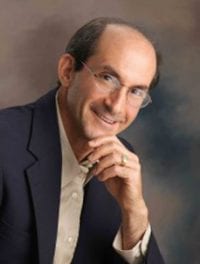
Our data enable us to develop a biologically interpretable landscape of lung pathology from a structural, immunological and clinical standpoint. We leverage the temporal range of fatal outcomes of COVID-19 in relation to the onset of symptoms, which reveals increased macrophage extravasation and increased numbers of mesenchymal cells and fibroblasts concomitant with increased proximity between these cell types as the disease progresses-possibly as a result of attempts to repair the damaged lung tissue. We provide evidence that SARS-CoV-2 infects predominantly alveolar epithelial cells and induces a localized hyperinflammatory cell state that is associated with lung damage. Neutrophil and macrophage infiltration are hallmarks of bacterial pneumonia and COVID-19, respectively. These spatially resolved single-cell data unravel the disordered structure of the infected and injured lung, alongside the distribution of extensive immune infiltration. Here we use high-parameter imaging mass cytometry 9 that targets the expression of 36 proteins to investigate the cellular composition and spatial architecture of acute lung injury in humans (including injuries derived from SARS-CoV-2 infection) at single-cell resolution. However, a thorough investigation of the interplay between infected cells and the immune system at sites of infection has been lacking. We are currently leveraging these mini-tissues as model platforms to study human liver diseases including genetic, metabolic disorders, and infectious diseases.Recent studies have provided insights into the pathology of and immune response to COVID-19 1, 2, 3, 4, 5, 6, 7, 8. I continue to focus on the many challenges in the derivation of new model systems to study human hepatotropic diseases and am interested in the challenges of clinical translation of stem cell derived hepatocytes and primary human hepatocytes. My work has involved the development of new stem cell techniques and model systems with the goal to better understand human disease and to develop new clinical treatments.
.jpg)
My career goal as an independent physician scientist investigator in the fields of gastroenterology and hepatology, biomedical engineering, stem cell, and regenerative medicine is to develop new platforms for hepatocyte study and to build and translate ideas and discoveries in the laboratory to the clinic. He did a postdoctoral fellowship at Massachusetts Institute of Technology (MIT) in the laboratory of Dr. His fellowship in gastroenterology and hepatology was completed at the Brigham and Women’s Hospital in Boston, Mass. He completed his residency in internal medicine at Washington University in St. His thesis work was on the derivation of stem cell-derived hepatocytes and in vitro liver model systems. at the University of Minnesota in Minneapolis. in chemical engineering from the Cooper Union in New York City, his Ph.D.

Modeling Human Disease Using Bioengineered Tissuesīio: Dr. Schwartz is also applying for Field Membership with the Meinig School of Biomedical Engineering. Robert Schwartz from Weill Cornell Medicine.
Robert schwartz cornell series#
Our next speaker we welcome in our series is Dr.


 0 kommentar(er)
0 kommentar(er)
